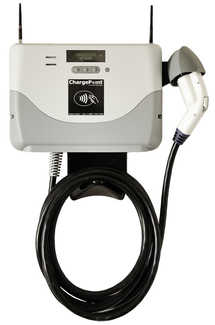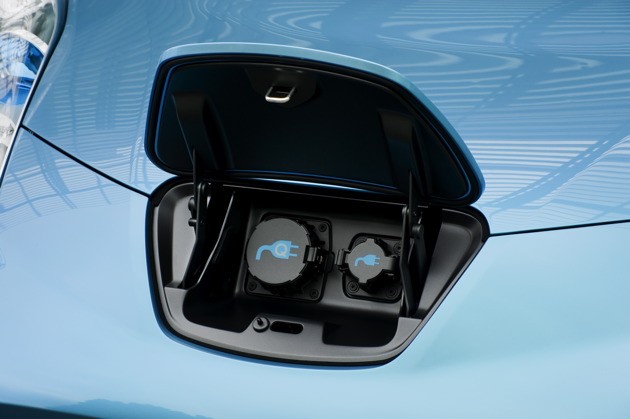There was a time when an electric car could be plugged into just about any electrical outlet its owner could find. With a little bit of ingenuity and forward planning, any electric car could plug-in just about anywhere.
We’ve heard stories of National Electric Drag Racing Association (NEDRA) Members plugging into 240V, 50A industrial outlets at the drag strip to obtain fast charging, Toyota RAV4 EV owners buying special chargers to enable the ageing electric cars a chance to plug in at J1772 charging stations and even of enterprising Tesla owners who carry just about every conceivable electrical converter to enable them to charge at anything from 110V, 15A to 240V, 70A.
But while drivers of existing electric cars just need to find an electrical outlet that matches the plug on the end of their charging lead, a new charging standard brings a little more sophistication to the mix, in the form of the Electric Vehicle Supply Equipment (EVSE) control.
Coulomb Technologies CT-500 electric vehicle charging station
Simply put, EVSE is a protocol to help keep you and your electric car safe while charging.
Using two-way communication between the charger and car, the correct charging current is set based on the maximum current the charger can provide as well as the maximum current the car can receive.
As part of the protocol, a safety lock-out exists, preventing current from flowing when the charger is not connected to the car. It ensures that if a cable is not correctly inserted, power will not flow through it.
EVSE can also detect hardware faults, disconnecting the power and preventing battery damage, electrical shorts or worse still, fire.
No User Input Necessary
There was a time when electric vehicle owners seeking ultimate connectivity and charging at the highest possible rate would have to manually adjust their car’s charger to ensure that only the charger did not pull more power than the circuit the car was charging from.
While Tesla’s 2011 Roadster may have a semi-intelligent system using GPS to remember which charging limits are required where, owners still have to enter applicable current limits when charging takes place in a new location for the first time if the charging location can supply less than the charger cable can pull.
EVSE eliminates all user interaction beyond plugging the J1772 connector in. The charger takes care of the rest.
charging cord for 2012 Ford Focus Electric
While cars with the J1772 charger receptacle like the 2011 Nissan Leaf and 2011 Chevy Volt will allow you to charge using level 2, 240V chargers, you can also charge at a lower rate using a 110V, 15A supply.
Such charge cables may look little more than a dumb plug designed to enable emergency charging from a 110V domestic outlet, but the cables contain simple electronic circuitry to ensure the car does not draw more than the 110V 15A allowed from a domestic socket.
What it doesn’t allow, however, is for a larger capacity plug such as a drier plug to be installed. Do that, and your electric car will likely fail to charge at all.
Nissan LEAF Charging Port
Over the next few years, expect some enterprising individuals to develop charger conversion boxes which enable an electric car to make use of any power outlet by spoofing the EVSE chargers to enable the user to charge from locations where electric car chargers are not yet in use.
Expect the opposite too, as electric cars without J1772 receptacles seek to charge at any available Level 2, EVSE compliant charging stations.
Simplicity Through Complexity
While some electric vehicle owners may view EVSE equipped chargers as expensive and unnecessary, they represent a much simpler way for the majority of consumers to charge their electric car.
The safety features alone also prevent unauthorised access to electric vehicle charging stations to non electric-car uses, ensuring electric car charging points are quick, easy and safe to use for everyone.












